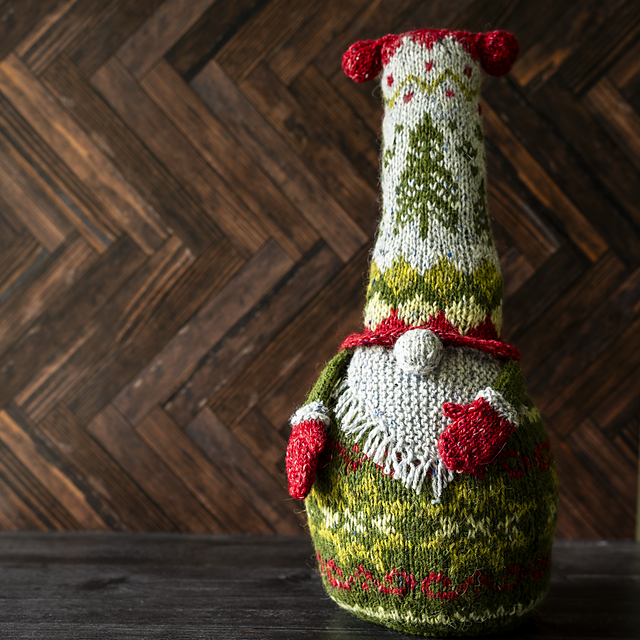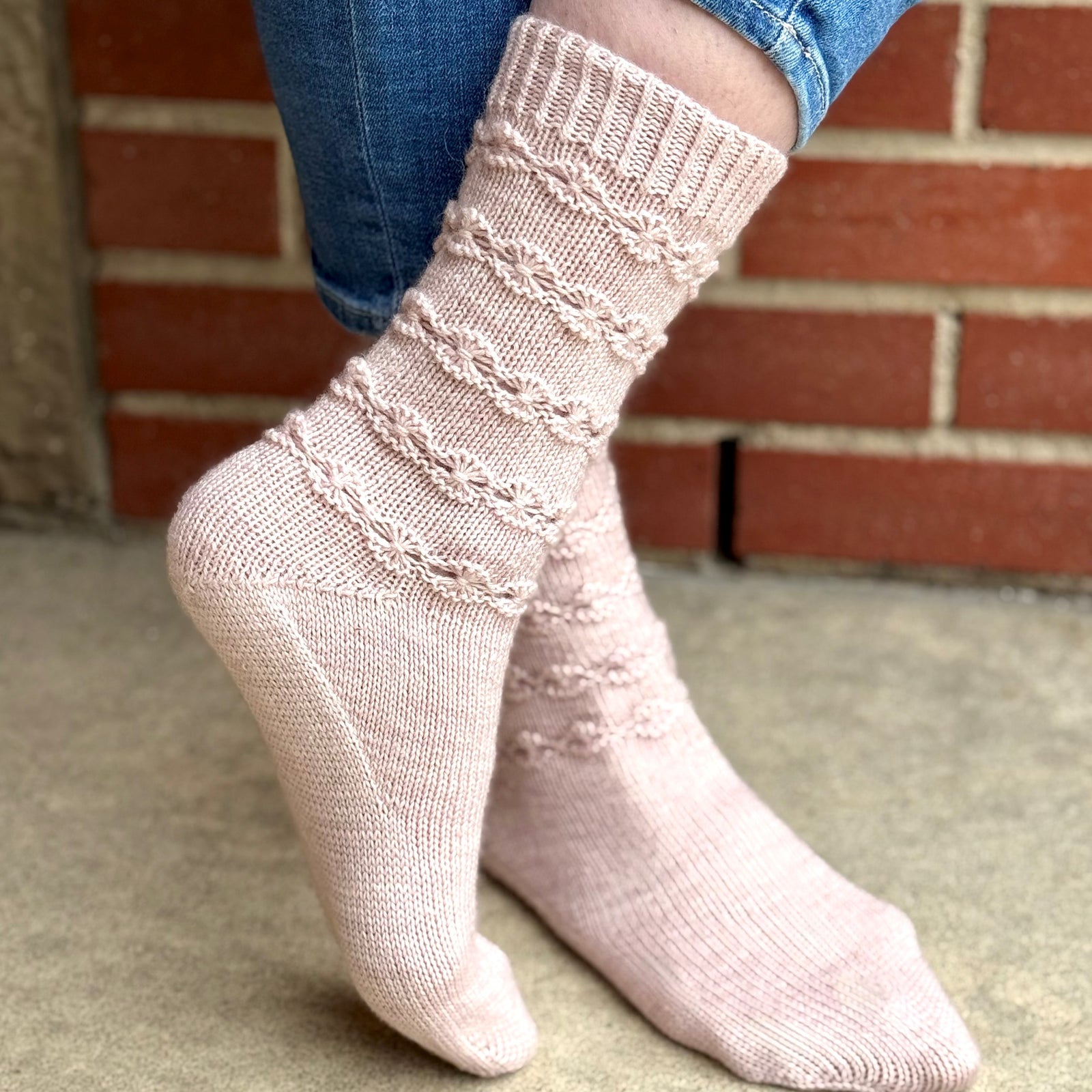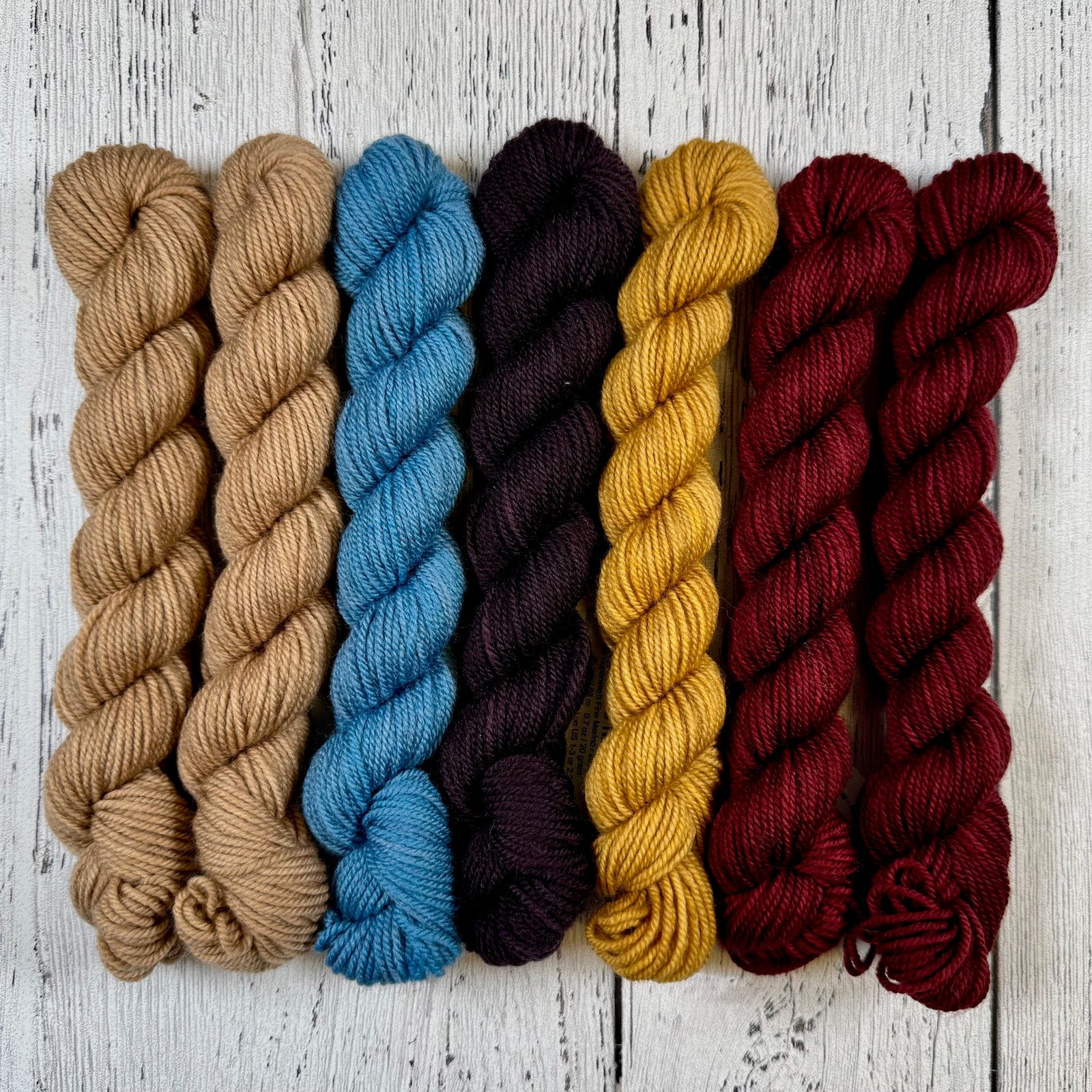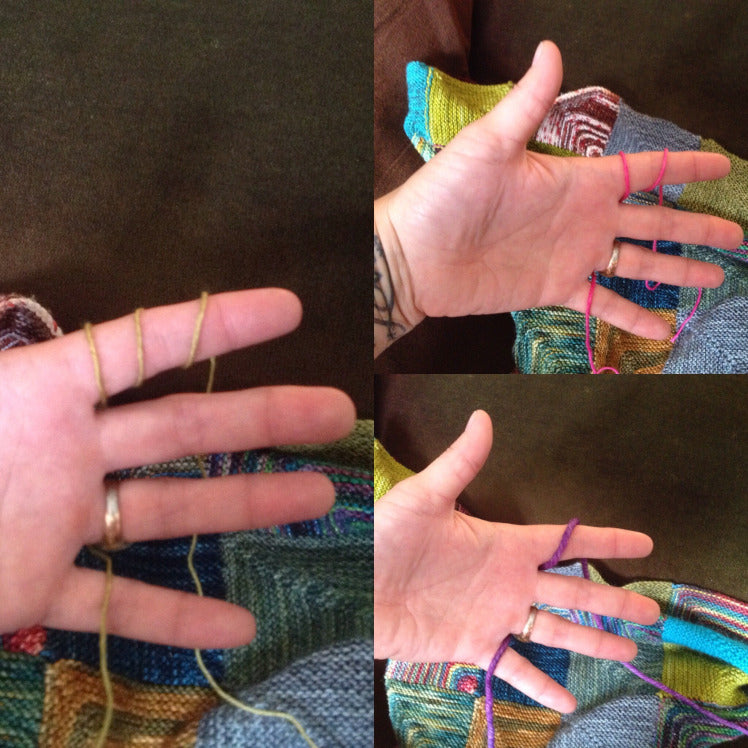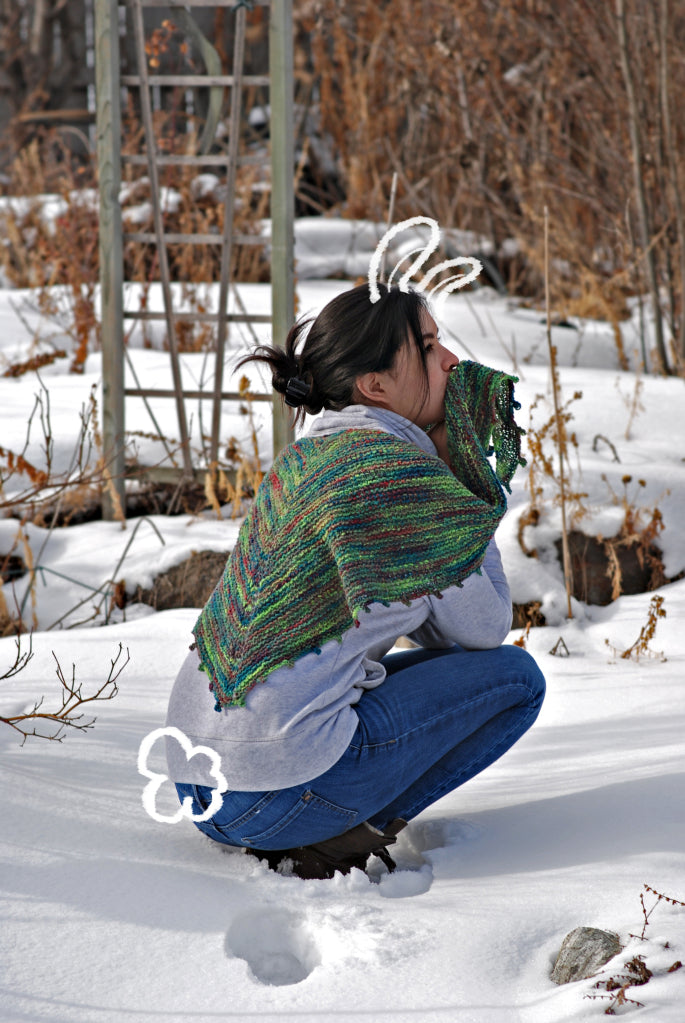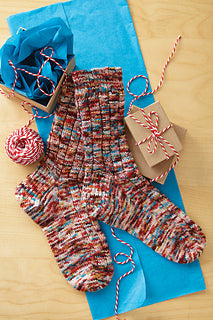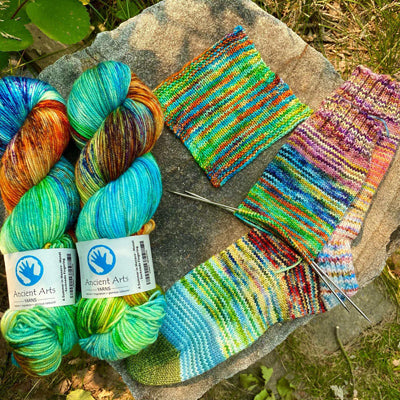When I first started knitting, like so many other newbs, fat, squishy yarns that would knit up fairly quickly were my cup o’ tea. I bet that if I look back at my first ten projects, I never went below a worsted weight, and even then would have knit with a larger needle size than typically recommended. Granted, my first projects were epic on the rookie scale: an afghan, a long cabled scarf in black, a tank top, etc. I’ve never knit a dishcloth. I have a tendency to jump in the deep end before knowing how to swim (figuratively speaking, I actually have a fear of deep water).
As time went on, I graduated to smaller projects with smaller needles, but quite often would favor jumping up a needle size or two. For some projects such as lace shawl, this resulted in larger finished objects (FOs) with no extra effort – a pretty nifty trick. For other projects where fit was important, I found that going up a needle size and working the instructions for the next size down was a way to speed up a project; it’s a little bit of russian knitting roulette that has thus far worked for me. I’ve also found that it gives me larger options for matching yarn to patterns! Now that I’m a little bit older (and hopefully a little bit wiser), I will knit up a swatch and calculate the gauge to make sure that the garment will be close to fitting.
When I entered the beginning of my completely-obsessed-with-knitting phase, which I am still very much in the middle of, I quickly discovered that I was developing repetitive motion pain. The horrible shooting pain down the index finger of my left hand terrified me. I’m definitely the kind of person that will continue to do something despite it hurting. Apparently the “ouch, stop that!” part of my survival instinct is broken. On the advice of several other knitters, I tried to take a 2 week sabbatical from my knitting. That lasted about 2 days. As long as I wasn’t knitting, it didn’t hurt, but because it didn’t always hurt, I kept tricking myself into believing I was magically healed. This might sound foolish, but knitting is something that grounds me. It keeps me sane. It keeps the people around me safe. If given a choice between mental health and physical health, I will choose mental health every time.
With the knowledge that I wasn’t going to stop knitting, I embarked on a quest to find a method of knitting that I could do for at least 8 hrs in a day without pain. Sounds crazy I know, and it’s not like I spend EVERY day knitting for 8 hrs… but usually about once or twice a month I go on a total knitting bender, and I have absolutely no interest in having a knitting hangover to go with it.
The first thing I did was adjust how I held my hands. I tried various ways – I’m a continental knitter, but there are still multiple ways within that to hold the needles and yarn. I adjusted how I wrapped the yarn around my hands until I found one that felt natural and easy. I’ve discovered that I can adjust the number of times I wrap the yarn around my index finger to keep the yarn tension consistent, depending on the thickness of the yarn. My general rule is once for fat yarn, twice for medium yarn, three times for lace weight and for the heels and toes on socks to make a tighter gauge. This way the yarn is always flowing at an easy and natural rate for me.
Despite this, my hands continued to have issues.

My next step was to start experimenting with different needles. I found that needles that were too slippery cause me to grip them harder, which exacerbated the problem. Needles that were too grippy caused me to have to work too hard and over exaggerate my movements. Dull tipped needles also caused me to work harder, and working harder meant more pain! I switched to smooth, natural needles with moderately sharp tips. Laminated birch and some bamboo fall into this category. I can use some metal needles, but not the super slick ones. My favourite metal is brass, it’s smooth enough for speed, but grippy enough to save me difficulties, also brass looks super Victorian which tickles me! I also learned that doing all my flat knitting on circulars can make a huge difference. When knitting with circulars your knitting dangles below your hands. When knitting with straight needles the weight of your knitting can be 6-8 inches horizontally away from your hands , causing pressure on your wrists. This isn’t to say that knitting with single pointed needles is a bad thing – for some it’s not an issue, but for me it is and I have not knit with them in almost 7 years. Finding the right needles for me has made a HUGE difference. I was mostly able to knit non-stop with no pain. I did get muscle fatigue if I went on a knit-bender, but the pain was largely gone!

Despite this, I did find that I would occasionally get repetitive motion pain, but only on certain projects. I quickly discovered that the last issue was needle size. Anything over 6.5mm/10.5 US would cause me pain if I knit it for more than an hour or two. Any large gauge projects would have to be done in one hour increments. So ironically for me, larger gauge projects tend to take me longer to finish!
Obviously I’m not a doctor, and if your physician tells you to take a break from knitting, you should totally do so! But if you find that you are getting the beginnings of repetitive motion pain, before it gets worse, try and find a way of knitting that works for you to keep the pain at bay. Check your hand position and find something that’s more comfortable for you, try different types of needles, experiment with knitting at a smaller or larger gauge, look up stretches for knitters on the internet. And while you’re trying all these things out, whisper my mantra: “You can’t stop the stitches.”


